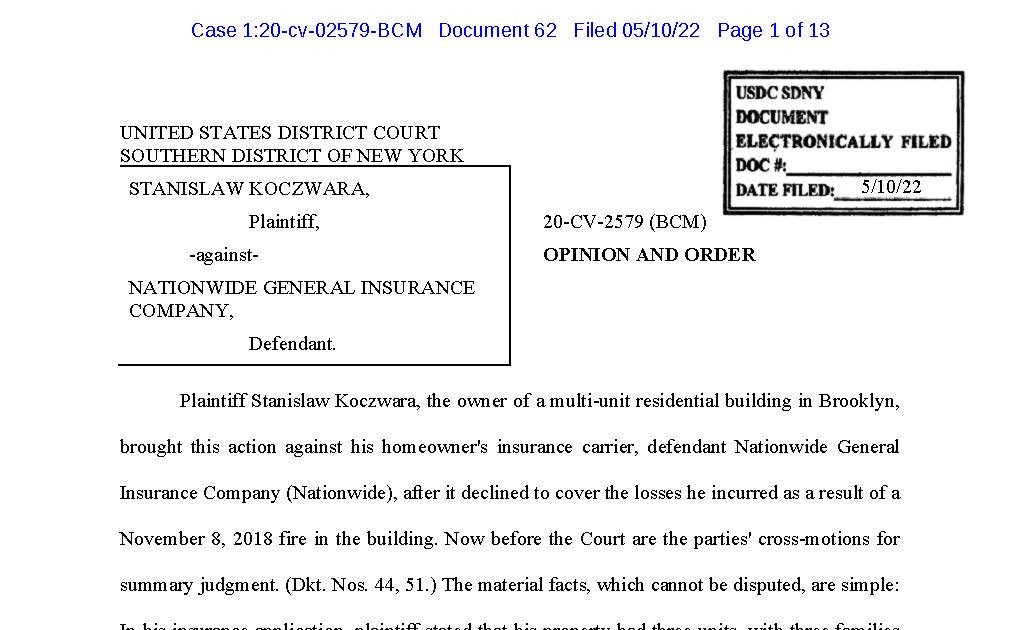4 + 2 ≠ "Residence Premises"

Last week I received a favorable decision and order for one of my insurer clients from the United States District Court for the Southern District of New York in a number-of-families homeowners policy application misrepresentation case. My client had denied coverage for the Brooklyn, NY fire loss based, in part, on the application misrepresentation but did not rescind the homeowners policy (that’s a thing). I conducted the policyholder’s EUO and defended the policyholder’s subsequent breach of contract action.
The Decision & Order begins:
The material facts, which cannot be disputed, are simple: In his insurance application, plaintiff stated that his property had three units, with three families living in them. The policy that Nationwide issued to him covered “one, two, three or four-family” dwellings. In fact, plaintiff’s building had at least six units, rented to unrelated tenants. After the fire, Nationwide discovered the additional units and denied coverage. As explained below, Nationwide was entitled to do so and consequently will be granted summary judgment.And adds:Plaintiff contends that the language of the Policy is ambiguous, preventing the Court from granting summary judgment. * * * He argues that because the Policy uses the term “one, two, three, or four family dwelling” rather than “one, two, three, or four unit building,” it is irrelevant that there were at least six separate residential units in the Subject Premises. ***
Neither logic nor precedent supports plaintiff’s hair-splitting argument. To the contrary: the New York courts have repeatedly explained that terms like “four family dwelling” are unambiguous. The Court granted summary judgment to Nationwide based solely on the uncontroverted fact that at the time of the fire, the dwelling did not meet the policy’s definition of a “residence premises” (because it was MORE than a four-family dwelling).
The Court also rejected plaintiff’s negligence argument (viz, that Nationwide could’ve and should’ve discovered the extra, illegal apartments before the fire) and, given its ruling on the residence premises issue, did not reach Nationwide’s alternative argument that the Policy was void because plaintiff intentionally misrepresented the material fact or circumstance of how many families lived within and how many units comprised the Subject Premises at the time he filled out his application.
You can read the decision by clicking the image below:



